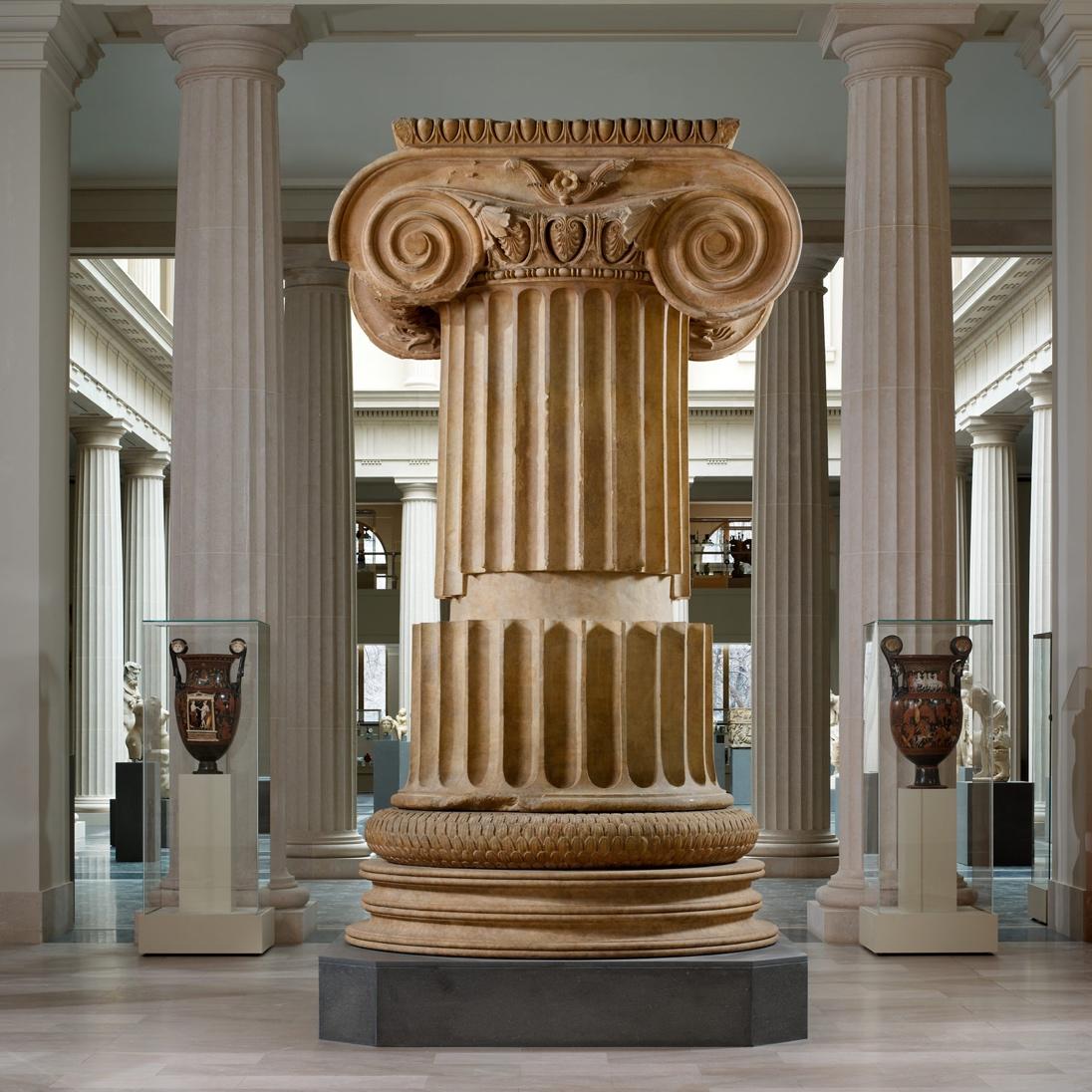The Chosen Example
The craftsmanship of architects from ancient Greece is so outstanding that it still influences the current architectural designs. The Met (2018) presents some pieces of classical Greek architecture. One of these sculptures is the “marble column from the Temple of Artemis at Sardis” (The Met, 2018, para. 1). This part of a column is made from marble, and it showcases the most recognizable elements of ancient Greece’s architectural forms. First of all, as shown in Figure 1, this column has volutes – spiral ornaments at the top, which are characteristic of the Ionic order. The style of the Ionic order was often used by Greeks, who adorned the spirals with stone flowers and other types of vegetation. Second, the carving at the top and bottom of the described column are highly detailed, which shows that the ancient architects were incredibly skilled in working with stone. At the bottom, the pattern resembles the scales of an animal or the skin of a plant.
Flower imagery, situated at the top of the column and under the volutes, is a common decoration for various Greek buildings and temples. However, as the Met (2018) states, this particular sculpture may not have been placed on the outside of the building but instead in one of the rooms. The column appears to be smaller than the other ones found at the same site. Therefore, this marble piece might be intended as a decoration for the interior and not part of the supporting structure.

Example’s Origins and Context
This column is attributed to the Hellenistic period, and its creation dates to the 300s B.C. (The Met, 2018). The remains of this stone sculpture once were a part of the Temple of Artemis, situated in Sardis, an ancient city in Lydia. Sardis was one of the most important cities of the Persian Empire. Now, it would be located in the territory of modern Turkey. The combination of various influences in the town was represented by the cultures of Greeks, Romans, and Persians. The described column is a clear example of the Greek contribution to the city’s architecture.
The vastness of the Greek influence on the city’s appearance could be explained by the strength of the Alexander the Great’s empire that was in its bloom in the 300s B.C. (The Met, 2018). The historical importance shows the impact that Greeks had on the city of the Persian kingdom. The context of this column also has a religious side, as Artemis was one of the central deities of ancient Greece. The design of this column and its vegetal adornments might be inspired by Artemis’ symbols – wild animals and cypresses. Thus, its bottom and top decorations may be referenced to the leaves of a cypress.
Contemporary Architecture Work
Ancient Greek architecture’s influence can be found in many works and projects that stand to this day. In the U.S., many government buildings and historical monuments use some details of the Greek style. Perhaps, ionic columns and highly-detailed carved decorations make these projects seem more grand and formidable. For instance, the Lincoln Memorial is one of the most famous examples of using a temple-resembling structure with columns, marble details, and vegetal adornments (U.S. National Park Service, 2018). This monument shows that the elements of ancient Greek architecture remain a staple of a powerful and triumphant design.
References
Marble column from the Temple of Artemis at Sardis [Image]. (2018). Web.
The Met. (2018). Marble column from the Temple of Artemis at Sardis. Web.
U.S. National Park Service. (2018). History & culture – Lincoln Memorial. Web.